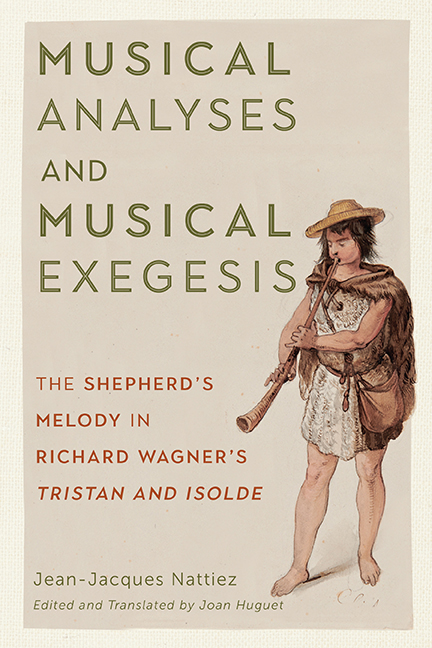 Musical Analyses and Musical Exegesis
Musical Analyses and Musical Exegesis Book contents
- Frontmatter
- Dedication
- Contents
- Foreword to the French Edition
- Preface
- Introduction: The English-Horn Solo, My Approach, and Models of Analysis and Musical Meaning
- Part I Immanent Analysis of the English-Horn Solo’s Musical Structures
- Part II Esthesic Analysis
- Part III Poietic Analysis
- Part IV Hermeneutics
- Conclusion: The Validity of Structural Analyses and Interpretations
- Bibliography
- Index
Conclusion: The Validity of Structural Analyses and Interpretations
Published online by Cambridge University Press: 02 June 2021
- Frontmatter
- Dedication
- Contents
- Foreword to the French Edition
- Preface
- Introduction: The English-Horn Solo, My Approach, and Models of Analysis and Musical Meaning
- Part I Immanent Analysis of the English-Horn Solo’s Musical Structures
- Part II Esthesic Analysis
- Part III Poietic Analysis
- Part IV Hermeneutics
- Conclusion: The Validity of Structural Analyses and Interpretations
- Bibliography
- Index
Summary
A Plethora of Musicological Constructs
Through my exploration of the forty-two measures of the English-horn solo and the various manifestations of the shepherd's melody throughout Tristan, I have tried to demonstrate that, in order to truly understand a musical work, it is necessary to employ the widest possible variety of methodologies—even if, as we are all well aware, true exhaustivity is impossible. Why should we impose such demands upon ourselves as scholars? Because, as we have seen throughout this study, each musicological paradigm that we have considered, whether structural, poietic, esthesic, or hermeneutic in nature, produces its own unique construction of a musical work. Of course, the differences between the structural approaches with which we began our study and the hermeneutic approaches with which we concluded it are self-explanatory. However, this is equally true of the methodologies within each of our four large musicological categories. The foundational premises of a Schenkerian analysis are not the same principles that guide a Ruwet-style paradigmatic analysis or a Meyer-style implicative analysis: both the analytical tools and the primary musical parameters under consideration vary between models. Even when working with the tools and objectives of a single model, different analysts will achieve varying results, as we saw when we compared Fred Lerdahl’s, Annie Labussière’s, and my own paradigmatic analyses of the solo. There is a simple reason for this: each analyst accords different weight to the pertinent elements of a musical work or corpus.
The number of possible musicological representations of a work only increases when we approach it from the perspective of each branch of the semiological tripartite division: structural analysis of the neutral level, esthesic pathways, and poietic pathways. This structure has proved fundamental to my study, as the first three parts of this book considered each branch of the tripartite structure in turn. The composer's production of an autonomous object, distinct from the creative processes that gave rise to it, justifies the existence of the immanent-level analyses considered in chapters 1–3. Once this task was completed, my goal in chapters 4, 5, and 6 was to prove that these immanent-level analyses could be esthesically interpreted, leading us to a picture of the solo that changed in accordance with each performer's and listener's account of it.
- Type
- Chapter
- Information
- Musical Analyses and Musical ExegesisThe Shepherd's Melody in Richard Wagner's <I>Tristan and Isolde</I>, pp. 414 - 424Publisher: Boydell & BrewerPrint publication year: 2021
